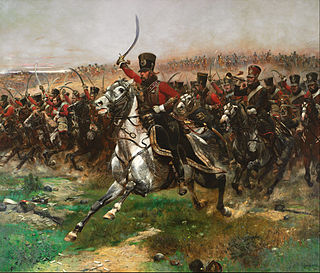
Cavalry are soldiers or warriors who fight mounted on horseback. Cavalry were historically the most mobile of the combat arms, operating as light cavalry in the roles of reconnaissance, screening and harassing in many armies, or as heavy cavalry for decisive shock attacks in other armies. An individual soldier in the cavalry is known by a number of designations depending on era and tactics, such as cavalryman, horseman, trooper, cataphract, hussar, lancer or dragoon. The designation of cavalry was not usually given to any military forces that used other animals for mounts, such as camels or elephants. Infantry who moved on horseback, but dismounted to fight on foot, were known in the 17th and early 18th centuries as dragoons, a class of mounted infantry which in most armies later evolved into standard cavalry while retaining their historic designation.

Dragoons originally were a class of mounted infantry, who used horses for mobility, but dismounted to fight on foot. From the early 17th century onward, dragoons were increasingly also employed as conventional cavalry, trained for combat with swords from horseback.
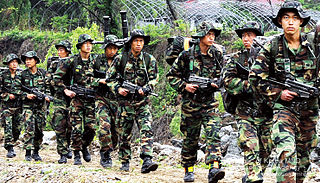
Infantry is a military specialization that engages in military combat on foot, distinguished from cavalry, artillery, and armored forces. Also known as foot soldiers or infantrymen, infantry traditionally relies on moving by foot between combats as well, but may also use mounts, military vehicles, or other transport. Infantry make up a large portion of all armed forces in most nations, and typically bear the largest brunt in warfare, as measured by casualties, deprivation, or physical and psychological stress.
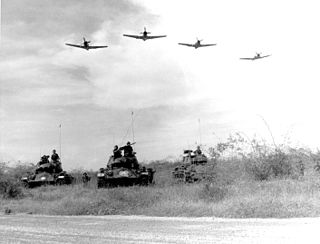
Combined arms is an approach to warfare which seeks to integrate different combat arms of a military to achieve mutually complementary effects. According to strategist William S. Lind, combined arms can be distinguished from the concept of "supporting arms" as follows:
Combined arms hits the enemy with two or more arms simultaneously in such a manner that the actions he must take to defend himself from one make him more vulnerable to another. In contrast, supporting arms is hitting the enemy with two or more arms in sequence, or if simultaneously, then in such combination that the actions the enemy must take to defend himself from one also defends himself from the other(s).

A grenadier was originally a specialized soldier, first established as a distinct role in the mid-to-late 17th century, for the throwing of grenades and sometimes assault operations. At that time grenadiers were chosen from the strongest and largest soldiers. By the 18th century, dedicated grenade throwing of this sort was no longer relevant, but grenadiers were still chosen for being the most physically powerful soldiers and would lead assaults in the field of battle. Grenadiers would also often lead the storming of fortification breaches in siege warfare, although this role was more usually fulfilled by all-arm units of volunteers called forlorn hopes, and might also be fulfilled by sappers or pioneers.

The Battle of Uclés saw an Imperial French corps led by Marshal Claude Perrin Victor attack a Spanish force under Francisco Javier Venegas. The French easily crushed their outnumbered foes, capturing over half of the Spanish infantry. Uclés is located in the province of Cuenca 15 kilometres (9.3 mi) east of Tarancón and 100 kilometres (62 mi) southeast of Madrid. The action occurred during what is called the Peninsular War in English-speaking countries and the Spanish War of Independence in Spain. The war was part of a larger struggle known as the Napoleonic Wars.
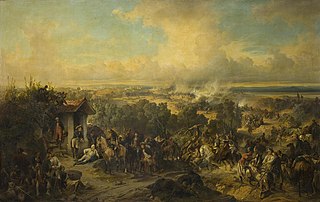
The Battle of Trebbia or the Napoleonic Battle of the Trebbia was fought near the Trebbia River in northern Italy between the joint Russian and Habsburg army under Alexander Suvorov and the Republican French army of Jacques MacDonald. Though the opposing armies were approximately equal in numbers, the Austro-Russians severely defeated the French, sustaining about 6,000 casualties while inflicting losses of 12,000 to 16,500 on their enemies. The War of the Second Coalition engagement occurred west of Piacenza, a city located 70 kilometres (43 mi) southeast of Milan.
The Grande Armée was the imperial army commanded by Napoleon I during the Napoleonic Wars. From 1804 to 1809, it won a series of military victories that allowed the French Empire to exercise unprecedented control over most of Europe. Widely acknowledged to be one of the greatest fighting forces ever assembled, it suffered terrible losses during the disastrous French invasion of Russia in 1812, after which it never recovered its tactical superiority.

Early modern warfare is associated with the start of the widespread use of gunpowder and the development of suitable weapons to use the explosive, including artillery and firearms; for this reason the era is also referred to as the age of gunpowder warfare. This entire period is contained within the Age of Sail, which characteristic dominated the era's naval tactics, including the use of gunpowder in naval artillery.

Caroleans were soldiers of the Swedish kings Charles XI and Charles XII. In the late 17th and early 18th centuries, in order to compensate for its lack of manpower and resources, Sweden strove for innovative ways to make a more effective army. The tactics of Caroleans differed from those of Western European soldiers in their greater reliance upon pikes, rapiers, bayonets, and offensive strategy, which helped them to be victorious, even when greatly outnumbered, in many important Swedish battles. The Carolean army is regarded as one of the most effective military forces of their time.

Light cavalry comprises lightly armed and lightly armoured troops mounted on horses, as opposed to heavy cavalry, where the riders are heavily armored. The missions of the light cavalry were primarily raiding, reconnaissance, screening, skirmishing, patrolling, and tactical communications. They were usually armed with swords, spears, or bows, and later on with pistols or carbines.

Line infantry was the type of infantry that composed the basis of European land armies from the middle of the 17th century to the middle of the 19th century. Maurice of Nassau and Gustavus Adolphus are generally regarded as its pioneers, while Turenne and Montecuccoli are closely associated with the post-1648 development of linear infantry tactics. For both battle and parade drill, it consisted of two to four ranks of foot soldiers drawn up side by side in rigid alignment, and thereby maximizing the effect of their firepower. By extension, the term came to be applied to the regular regiments "of the line" as opposed to light infantry, skirmishers, militia, support personnel, plus some other special categories of infantry not focused on heavy front line combat.

Horse artillery was a type of light, fast-moving, and fast-firing artillery which provided highly mobile fire support, especially to cavalry units. Horse artillery units existed in armies in Europe, the Americas, and Asia, from the 17th to the mid 20th century. A precursor of modern self-propelled artillery, it consisted of light cannons or howitzers attached to light but sturdy two-wheeled carriages called caissons or limbers, with the individual crewmen riding on horses. This was in contrast to the rest of the field artillery, which were also horse-drawn but whose gunners were normally transported seated on the gun carriage, wagons or limbers.
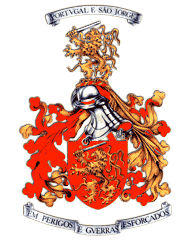
The Portuguese Army is the land component of the Armed Forces of Portugal and is also its largest branch. It is charged with the defence of Portugal, in co-operation with other branches of the Armed Forces. With its origins going back to the 12th century, it can be considered as one of the oldest armies in the world.

The Coalition Forces of the Napoleonic Wars were composed of Napoleon Bonaparte's enemies: the United Kingdom, the Austrian Empire, Kingdom of Prussia, Kingdom of Spain, Kingdom of Naples and Sicily, Kingdom of Sardinia, Dutch Republic, Russian Empire, the Ottoman Empire, Kingdom of Portugal, Kingdom of Sweden, various Confederation of the Rhine and Italian states at differing times in the wars. At their height, the Coalition could field formidable combined forces of about 1,740,000 strong. This outnumbered the 1.1 million French soldiers. The breakdown of the more active armies are: Austria, 570,000; Britain, 250,000; Prussia, 300,000; and Russia, 600,000.
There are 13 Cavalry Regiments of the British Army each with its own unique cap badge, regimental traditions, and history. Of the currently 9 regular cavalry regiments, 2 serve as armoured regiments, 3 as armoured cavalry regiments, 3 as light cavalry, and 1 as a mounted ceremonial regiment. There are also four yeomanry regiments of the Army Reserve, of these, 3 serve as light cavalry and 1 as an armoured regiment. Each yeomanry light cavalry unit has been paired with a regular unit of the same role, the armoured yeomanry unit is paired with the 2 regular armoured units. All except the Household Cavalry are part of the British Army's Royal Armoured Corps.

The Voltigeurs were French military skirmish units created in 1804 by Emperor Napoleon I. It officially replaced the second company of fusiliers, which were also chasseurs.

Horses were widely used during the Napoleonic Wars for combat, patrol and reconnaissance, and for logistical support. Vast numbers were used throughout the wars. During the War of the Sixth Coalition, depletion of the French cavalry arm through attrition and loss of horse-producing allies to provide remounts contributed significantly to the gradual French defeat and downfall of the French Empire. During the Waterloo Campaign, the Armee du Nord had 47,000 horses: 25,000 cavalry, 12,000 for artillery, 10,000 for infantry and supply columns.
Napoleonic tactics describe certain battlefield strategies used by national armies from the late 18th century until the invention and adoption of the rifled musket in the mid 19th century. Napoleonic tactics are characterized by intense drilling of the soldiers, speedy battlefield movement, combined arms assaults between infantry, cavalry, and artillery, relatively small numbers of cannon, short-range musket fire, and bayonet charges. Napoleon I is considered by military historians to have been a master of this particular form of warfare. Napoleonic tactics continued to be used after they had become technologically impractical, leading to large-scale slaughters during the American Civil War, Austro-Prussian War and the Franco-Prussian War.

The Royal Sardinian Army was the army of the Duchy of Savoy and then of the Kingdom of Sardinia, which was active from 1416 until it became the Royal Italian Army on 4 May 1861.














